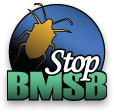- HOME
- » ABOUT US
- » Reports/Presentations
- » Presentations and Posters
- » IPM Working Group Meeting, June 2015
IPM Working Group Meeting, June 2015
Report
Presentations
- Haunted House: Getting Rid of BMSBs – Inkley (PDF)
- From Bubble Baths to Baking Bugs: A Potpourri of Our Urban Pest Control Research Endeavors on BMSB in Virginia – Kuhar (PDF)
- BMSB Effects on the Shipping Industry – Hansen (PPTX)
- PMPs and BMSB: Where We Stand and Where We Are Going – Jordan (PDF)
- Structural Pest Control and the Brown Marmorated Stink Bug – Burgess (PPTX)
- Great Stink Bug Count – Hancock (PPTX)
- BMSB Research in New Zealand – Teulon (PPTX)
- Designing Stink Bug Free Landscapes – Shrewsbury (PDF)
- Management of BMSB on Commercial Buildings – Hamilton (PPT)
- ChiroSurveillance: The Use of Native Bats to Detect the Invasive BMSB – Maslo (PPT)
- Surprising Sentinels: Exotic Egg Parasitoid Appears at Beltsville – Herlihy (PPT)
- Developing a Fungal Biocontrol Agent against BMSB – St. Leger (PDF)
- Northeastern BMSB Updates – Leskey (PPTX)
- Status of Brown Marmorated Stink Bug in the Midwest – Bessin (PPT)
- Status of BMSB in the Southern Region – Walgenbach (PPTX)
- BMSB Update for the Western Region – Wiman (PDF)
